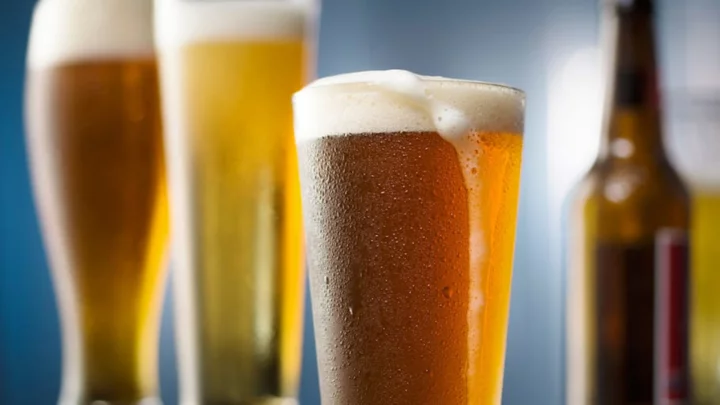
What is ALS and what are the causes?
Sandra Bullock’s longterm partner Bryan Randall has died at the age of 57 after a three-year battle with amyotrophic lateral sclerosis (ASL). His family shared a statement confirming that Randall “passed away peacefully” on Saturday (5 August), adding that he “chose early to keep his journey with ALS private and those of us who cared for him did our best to honour his request”. The statement, sent to People magzine, continued: “We are immensely grateful to the tireless doctors who navigated the landscape of this illness with us and to the astounding nurses who became our roommates, often sacrificing their own families to be with ours.” Bullock and Randall first met in 2015 and made their first public appearance together the following year. The model-turned-photographer’s family has asked for donations to be made to the ALS Association and the Massachusetts General Hospital. ALS affects nerve cells in the brain and spinal cord, its name coming from the Greek and referring to a wasting away of the muscles responsible for controlling voluntary movement caused by a lack of nourishment, the fault of a genetic mutation. As the ALS Association explains: “Motor neurons reach from the brain to the spinal cord and from the spinal cord to the muscles throughout the body. The progressive degeneration of the motor neurons in ALS eventually leads to their demise. “When the motor neurons die, the ability of the brain to initiate and control muscle movement is lost. When voluntary muscle action is progressively affected, people may lose the ability to speak, eat, move and breathe. “The motor nerves affected when you have ALS are the motor neurons that provide voluntary movements and muscle control. Examples of voluntary movements are making the effort to reach for a smartphone or step off a curb. These actions are controlled by the muscles in the arms and legs.” Early symptoms of the disease, according to the US National Institute of Neurological Disorders and Strokes (NINDS), include: muscle twitches in the arm, leg, shoulder or tongue; cramps; tight or stiff muscles; muscle weakness; slurred or nasal speech; and difficulty chewing and swallowing. “The first sign of ALS usually appears in the hand or arm and can show as difficulty with simple tasks such as buttoning a shirt, writing, or turning a key in a lock,” the NINDS explains. “In other cases, symptoms initially affect one leg. People experience awkwardness when walking or running, or they may trip or stumble more often.” There is currently no cure for ALS but the US Food and Drug Administration has approved four drugs to treat the condition and ease the discomfort of sufferers: Riluzole, Nuedexta, Radicava and Tiglutik. It was first discovered by French neurologist Jean-Martin Charcot in 1869 and is also commonly known as Lou Gehrig’s disease in memory of the celebrated New York Yankees baseman (1903-41) who also suffered from it. While ALS affects all demographics, it is most common among people aged between 55 and 75 and, according to some studies, disproportionately affects former members of the armed forces, perhaps because of exposure to harmful toxins during their service careers although this has not been definitively substantiated. The ALS Association reports that, in 90 per cent of cases of ALS, there is no family history of the genetic mutation that causes the disease and, in the 5-10 per cent of cases in which there is, only a 50 per cent possibility exists of its being passed on. For more information, please visit the websites of the ALS Association or the National Institute of Neurological Disorders and Strokes. Read More Roberta Flack announces she has ALS and finds it ‘impossible to sing’ NIH to fund unproven ALS drugs under patient-backed law ALS drug wins FDA approval despite questionable data Brain’s appetite control centre different in overweight or obese people – study Areas with lower bird diversity ‘have more mental health hospital admissions’ Greg Rutherford rushed to hospital ‘screaming and clawing at his skin’
2023-08-08 17:19

The best spa hotels in Dorset for luxury and relaxation
What makes a holiday in Dorset? Maybe it’s fish and chips at the seaside, or hiking to the highest point on England’s south coast before rewarding yourself with a pint of local beer. Or visits to nude hill figures or an iconic limestone arch might take your fancy. This jewel of the West Country has things to do in spades – eating, drinking, active or laidback – plus plenty of on-trend hotels in which to lay your head. If Dorset’s much-extolled salted sea air and bucolic tranquillity isn’t enough to bring you utter relaxation, you’re in luck. Among the county’s hills and on its rugged coast are hotels that have getting guests to unwind baked into their being. Think warmed underground pools, blissful treatments ranging from traditional through modern, and space to just… be. There’s more to Dorset than just apple cake and Thomas Hardy. If you want a UK getaway – and to give your wellbeing a holistic boost – these are the best spa hotels in Dorset to book. The best spa hotels in Dorset are: Best for style by the sea: The Nici Best for the traditional approach: Summer Lodge Country House Hotel Best for a hidden escape: The Eastbury Best for a foodie getaway: Christchurch Harbour Hotel & Spa Best for coastal cool: The Pig on the Beach Best for style by the sea: The Nici Location: Bournemouth The hotel that Bournemouth – overstocked with dowdy, dated seaside accommodation – has been crying out for. Inside, spaces are filled with art, tropical prints and a hint of Art Deco; outside, the star is a 30m heated pool, very much a nod to Miami’s South Beach, and the town’s long stetch of sand can be reached by a short zig-zag path. If you can wrench yourself from a cabana, The Nici’s swish spa beckons, all soft lighting and gentle music (a change from the pumping soundtrack poolside). Treatments incorporate products from British “nutri-cosmeceutical” beauty brand Oskia, as well as CBD pioneers OTO. The latter’s Nici signature massage is a joy, where CBD-infused oils soothing tired muscles and dislodge long-held knots; afterwards, curl up in the relaxation space and pop open a can of OTO’s CBD seltzer, before making use of the steam room, sauna and indoor pool (or the gym, if you feel suitably energised post-treatment). Best for the traditional approach: Summer Lodge Country House Hotel Location: Evershot Summer Lodge remains Dorset’s countryside grande dame (and the county’s only five-star hotel). The quintessential rural pad, it has beautifully restored rooms with high ceilings, watercolours, and chandeliers. The four-acre estate is set in Evershot, a village little changed since it featured in local author Thomas Hardy’s Tess of the d’Urbervilles (and while there, prop up the bar or sit beside the fire at the trad-yet-cool Acorn Inn). The spa is a major highlight of Summer Lodge, packed with Elemis treatments, from deep-cleansing facials through to rejuvenating wraps, plus a hefty list of massages and manicures. Bespoke spa packages can be arranged depending on the occasion, and if you’re on a family break there are special “junior” treatments for younger guests. Wellbeing extends to a gym, sauna and heated indoor pool, and there are quiet corners of the fragrant gardens in which to unwind in private. Best for a hidden escape: The Eastbury Location: Sherborne This is perhaps the prettiest little spa in the West Country, hidden at the bottom of The Eastbury’s walled garden and reminiscent of a Hobbit hole. Only the occasional ringing of bells from the abbey reminds you that you’re in the historic market town of Sherborne. There are two treatment rooms, where massage therapy mollifies any pesky aches, as well as a hydrotherapy tub, sauna and relaxation areas which you have all to yourself (you book the space by the hour). The hotel dates from the 18th century, built as gentleman’s townhouse, so expect plenty of traditional style as well as modern touches brought in during a 2018 refurb. Since the start of 2023, they no longer have a restaurant (a shame, as chef Matthew Street’s tasting menus were impressive) but instead offers breakfast, light lunches and afternoon tea. Best for a foodie getaway: Christchurch Harbour Hotel & Spa Location: Christchurch Christchurch’s natural harbour is wonderful sweep of the Dorset coast, and the best ways to soak up its views – over to Mudeford Spit and its expensive beach huts, and beyond to the Channel – is by staying at its namesake hotel. The 1930s property has a blended palette of muted and vibrant tones inside, and right on the water is its headline restaurant, The Jetty. It’s seafood-heavy menu comes from Alex Aitkin, who held a Michelin star at Le Poussin; for a reliable, fresh taste of local waters, plump for the catch of the day. The HarSpa is found below-ground – they describe it as “subterranean” – and is lit by coloured spotlights around a heated pool and whirlpool tub. While away a day on one of the sun loungers (indoor and outdoor), an activity you can break up with Espa beauty treatments or full-body massages. The spa menu also features offerings designed specifically for men and pregnant women. Best for coastal cool: The Pig on the Beach Location: Studland The litter of Pig hotels has one of its very finest locations in east Dorset, at the edge of land overlooking the Old Harry Rocks chalk formation. There’s whimsy in the turrets and sloping roofs that make up the 16th-century manor, and – in classic Pig aesthetic – there’s a surrealism in the luxe Victoriana-meets-countryside décor. The restaurant makes use of the county’s incredible larder, only sourcing produce within a 25-mile radius, and its menu favours unfussy, well-paired flavours. Don’t forget to visit the pigs and sheep in their pens, which you can hear as you knock back cocktails (try the rum-drenched Jungle Pig 2.0) on the lawn. Beyond the garden, which guests can discover down a path, are two adorable shepherd’s huts. These comprise the spa, simple and understated. They’re very Mr McGregor’s garden (of The Tale of Peter Rabbit fame) in style, in keeping with the kitchen garden ethos of the restaurant. The six treatments, each 60 minutes and costing £115, use products from the County Sligo seaweed brand VOYA. thepighotel.com Read more on the best Dorset hotels
2023-08-08 17:16

Areas with lower bird diversity ‘have more mental health hospital admissions’
Areas with lower bird diversity appear to have a higher number of hospital admissions related to mental health conditions, research suggests. Experts analysed data from ebird – an online database of bird observations by citizen scientists – to estimate diversity across the US state of Michigan. The team then combined this with hospital admissions for anxiety and mood disorders in the state. The findings, published in the journal Geo: Geography And Environment, showed lower bird diversity to be a significant predictor of higher numbers of hospital admissions for mental health conditions, highlighting the complex relationship between the disorders and biodiversity crises. It is critical we take a holistic approach to our mental health and nature Dr Rachel Buxton The researchers said that while income and the presence of green spaces were the strongest predictors of anxiety and mood disorder-related admissions, there were also independent “significant associations” between mental health and bird diversity. Lead author Dr Rachel Buxton, assistant professor at the Institute of Environmental and Interdisciplinary Sciences at Carleton University in Canada, said: “Often we consider nature as representing the amount of green space near homes or the distance to the nearest park, but the link between species diversity and health is underexplored. “Our study shows that if species diversity can affect mental health at the severe end of the spectrum (hospitalisations), it is possible that the decline in biodiversity across the globe may be intricately connected with our anxiety and mood on a day-to-day basis. “It is critical we take a holistic approach to our mental health and nature. “Investing in nature should not be viewed as a luxury, but a necessity, and evaluated in the context of the support for wellbeing it offers individuals and communities living in urban or nature-scarce environments. “Restoring and conserving diverse bird communities could be one avenue to improving mental health in cities and factored into urban restoration projects and public health policies.” Last year, researchers from King’s College London found that watching birds or listening to birdsong was linked to mental wellbeing, with effects lasting up to eight hours. The Institute of Psychiatry, Psychology & Neuroscience (IoPPN) team said at that time that the links between birds and mental wellbeing were not explained by co-occurring environmental factors such as the presence of trees, plants or waterways.
2023-08-08 16:19

Brain’s appetite control centre different in overweight or obese people – study
The brain’s appetite control centre is different in the brains of people who are overweight or live with obesity, a new study suggests. The researchers said their findings add further evidence to the relevance of brain structure to weight and food consumption. Current estimates suggest that more than 1.9 billion people worldwide are either overweight or obese. And, according to the Office for Health Improvement and Disparities, almost two-thirds of adults in the UK are overweight or living with obesity. This increases the risk of developing health issues like type 2 diabetes, heart disease and stroke, cancer and poorer mental health. The last two decades have given us important insights about appetite control and how it may be altered in obesity Professor Paul Fletcher, University of Cambridge A number of factors influence how much people eat and what they eat, including genetics, hormone regulation, and the environment they live in, researchers say. However, it is not entirely clear what happens to the brain to tell us that we are hungry or full. Past studies have shown that the hypothalamus – a small region of the brain about the size of an almond – plays an important role. Dr Stephanie Brown, from the Department of Psychiatry and Lucy Cavendish College, University of Cambridge, said: “Although we know the hypothalamus is important for determining how much we eat, we actually have very little direct information about this brain region in living humans. “That’s because it is very small and hard to make out on traditional MRI brain scans.” Professor Paul Fletcher, the study’s senior author, from the Department of Psychiatry and Clare College, Cambridge, said: “The last two decades have given us important insights about appetite control and how it may be altered in obesity. “Metabolic researchers at Cambridge have played a leading role in this. “Our hope is that, by taking this new approach to analysing brain scans in large datasets, we can further extend this work into humans, ultimately relating these subtle structural brain findings to changes in appetite and eating and generating a more comprehensive understanding of obesity.” The majority of evidence for the role of the hypothalamus in appetite regulation comes from animal studies, which indicate complex interacting pathways within the hypothalamus, with different cell populations acting together to tell us when we are hungry or full. To get around this researchers used an algorithm developed using machine learning to analyse brain scans taken from 1,351 young adults across a range of BMI scores. They looked for differences in the hypothalamus when comparing individuals who are underweight, healthy weight, overweight, or living with obesity. According to the findings, the overall volume of the hypothalamus was significantly larger in the overweight and obese groups of young adults. The researchers describe a significant relationship between volume of the hypothalamus and body mass index (BMI). The differences were most apparent in those sub-regions of the hypothalamus that control appetite through the release of hormones to balance hunger and fullness. While the exact significance of the finding is unclear, one explanation is that the change relates to inflammation, the researchers suggest. Eating a high-fat diet could trigger inflammation of our appetite control centre Dr Stephanie Brown, University of Cambridge Previous animal studies have shown that a high-fat diet can cause inflammation of the hypothalamus, which in turn prompts insulin resistance and obesity. In mice, just three days of a fat-rich diet is enough to cause this inflammation. Other studies have shown that this inflammation can raise the threshold at which animals are full – in other words, they have to eat more food than usual to feel full. Dr Brown added: “If what we see in mice is the case in people, then eating a high-fat diet could trigger inflammation of our appetite control centre. “Over time, this would change our ability to tell when we’ve eaten enough and to how our body processes blood sugar, leading us to put on weight.” More research is needed to confirm whether increased volume in the hypothalamus is a result of being overweight or whether people with larger hypothalami are predisposed to eat more in the first place. It is also possible that these two factors interact with each other, causing a feedback loop, the study published in Neuroimage: Clinical, and supported by the Bernard Wolfe Health Neuroscience Fund, Wellcome and the NIHR Cambridge Biomedical Research Centre, with additional funding from Alzheimer’s Research UK, suggests.
2023-08-08 16:15

Tokyo’s Newest Hills Development Scheduled to Open in November
Azabudai Hills, the latest large-scale real estate project by Mori Building Co., will open for business on Nov.
2023-08-08 13:27

McDonald’s employee claims fast food chain’s sweet tea is made with entire bag of sugar – but others disagree
A McDonald’s employee has claimed that the fast food chain’s sweet tea is made with an entire bag of sugar. The woman named Gia, who goes by the username @gia2bad, shared a video to TikTok last month about the apparent making of McDonald’s sweet tea. In the footage, an employee appeared to be mixing the tea, as hot water was being added to it. Along with the two liquids, the employee went on to pour an entire four-pound bag of granulated sugar into the bucket. Gia also poked fun at the large amounts of sugar being used, as the text over the video read: “If y’all were wondering why the sweet tea is so sweet at McDonald’s.” She also claimed that it can take more than one bag of sugar to make the tea, writing: “Yes we use a whole bag, sometimes two.” The video went viral, with more than 1.3m views. In the comments, many people shared their shocked reactions, while poking fun at the amount of sugar filmed in the video. “Diabetes in a cup,” one quipped, while another added: “Is no one gonna talk about the bucket.” “That explains why it’s way too sweet. I always order half sweet and half unsweetened,” another wrote. Despite what was shown in the video, other people claimed that they’ve worked at McDonald’s before, and they had never seen the sweet tea made in that way. “I work there and we don’t do that…,” one wrote, while another added: “We don’t hand make sweet tea at our store it’s made with a commercial tea machine.” “We have a machine for this… I never done this when I worked at McDonald’s,” a third agreed. According to McDonald’s official website, the sweet tea is made from an “orange pekoe and pekoe cut black tea”. Some of the other ingredients in the cup include ice, and invert sugar, which “is an aqueous solution of inverted or partly inverted, refined or partly refined sucrose,” according to the Food and Drug Administration. McDonald’s also notes that in a large cup of the sweet tea, there are 40 grams of sugar. According to the FDA, its Dietary Guidelines for Americans “recommends limiting calories from added sugars to less than 10 percent of total calories per day”. For example, if you eat 2,000 calories a day, you’d only have “50 grams of added sugars per day”. @gia2bad Yes we use a whole bag sometimess 2 ?♀️?♀️ #fyp ♬ original sound - DJ Veinz The Independent has contacted Gia and a representative for McDonald’s for comment. Gia isn’t the first McDonald’s employee to make claims about how the chain’s sweet tea is allegedly made. In a viral TikTok video made by former McDonald’s worker, Nicole, she also claimed that there was a lot of sugar used to make the tea. “For every four gallons of the red jug, the sweet tea, there was a full four-pound bag of sugar emptied into it,” the woman, who said she was a manager at McDonald’s, explained in the since-deleted video, which has been shared on YouTube. “One pound per gallon of tea. I stopped drinking the tea after I realised that. Because that’s nasty.” Read More McDonald’s to investigate allegations worker was taunted over rape Mark Zuckerberg reveals his 4,000 calorie diet and large McDonald’s order Coca-Cola, McDonald’s and PepsiCo named as worst packaging polluters in UK Mark Zuckerberg reveals his 4,000 calorie diet and large McDonald’s order Budget Bites: Three recipes to keep food bills down before pay day I was an air fryer sceptic – now I can’t stop using it
2023-08-08 08:23

Thailand Pushes Yuan, Ringgit Use to Curb Impact of Baht Swings
Thailand plans to promote the use of yuan and other Asian currencies in trade and investments to curb
2023-08-08 07:28

Waste Not: This Beer Is Made From Recycled Shower Water
Who wants to buy a round of wastewater brews for the gang?
2023-08-08 00:22

Coronavirus: Can your dog or cat get Covid-19 and can you catch it from your pet?
In February a pet dog in Hong Kong tested ‘weak positive‘ for coronavirus and was placed into quarantine. The Agriculture, Fisheries and Conservation Department (AFCD) in Hong Kong confirmed that repeated tests suggested the dog had a “low-level” of the virus and that it was likely to be the case of human-to-animal transmission. The dog, a Pomeranian, had not shown any symptoms for the illness but its owner was confirmed as being infected with Covid-19. Now pet owners are becoming increasingly concerned they could catch the deadly disease from their animals - but is that scientifically possible? Can I catch coronavirus from my pet? On 2 April a Chinese study showed that cats are "highly susceptible" to coronavirus and it can easily be passed between them. But only five cats were involved in the experiment. This follows the news that a cat reportedly contracted coronavirus in Belgium but health authorities in the country said it was an "isolated case" and not "the rule". There are still no reports of animals in the UK with coronavirus. On 13 March the World Health Organisation said "at present there is no evidence that companion animals/pets such as dogs or cats can be infected with the new coronavirus". Several global health organisations have issued advisories saying there is no any evidence that pet animals can spread coronavirus or indeed be infected with it in the same way as humans. “Therefore, there is no justification in taking measures against companion animals which may compromise their welfare,” the World Organisation for Animal Health has said. The Centers for Disease Control and Prevention concurred that “there is no reason to think that any animals including pets in the United States might be a source of infection with this new coronavirus”. Raymond R.R. Rowland, a veterinarian who specialises in swine viruses at Kansas State University, said that “weak positives” frequently show up in testing pigs, where a farmer’s livelihood can be at stake. “I’ll tell you what I tell them,” he told The New York Times. “Wait and see.” Even if the Pomeranian has a low-level infection, he said: “that doesn’t say the animal is sufficiently infected that it can spread the virus.” The dog could simply be a host for the illness that neither becomes unwell or infects other people or animals. Should I change my behaviour with my pet? The World Health Organisation says: "It is always a good idea to wash your hands with soap and water after contact with pets. “This protects you against various common bacteria such as E.coli and Salmonella that can pass between pets and humans.” To protect yourself from catching coronavirus, the WHO advises the following: Cover your mouth and nose while sneezing, with a tissue or your elbow Put the tissue straight into a closed bin Wash your hands afterwards, and then frequently, with soap or sanitiser Keep your distance from people who are coughing and sneezing (at least one metre) [[Updated UK government advice also says people should stay at home and practice social distancing]. You can read more about the WHO’s advice on coronavirus here. Read More What are symptoms of coronavirus – and where has it spread? Latest travel updates as coronavirus continues to spread Can face masks really protect you against coronavirus or flu? The dirty truth about washing your hands Greg Rutherford had mystery allergy left him ‘screaming and clawing at his skin’ What is Lyme disease? Bella Hadid reveals ’15 years of invisible suffering’ Study reveals how muscle cells deteriorate with age, hampering injury recovery
2023-08-07 23:54

CBS game show 'Superfan' celebrates musicians like Shania Twain, Kelsea Ballerini and Pitbull
CBS' latest game show, “Superfan,” premiering Wednesday, gathers one musical act and their fans each week into a studio and gradually whittles the contestants down to two, giving online voters the final say on who will be crowned the ultimate superfan
2023-08-07 23:21

Greg Rutherford rushed to hospital after mystery allergy left him ‘screaming and clawing at his skin’
Greg Rutherford’s fiancée Susie Verrill has shared that she had to rush the British track and field athlete to the hospital on Saturday (5 August) after an unknown illness left him “clawing at his skin and just screaming”. Verrill, a social media influencer and blogger, posted about the incident on her Instagram page on Monday morning (7 August) and described it as the “scariest time” of her life. Alongside a photograph of Rutherford, 36, sitting up in a hospital bed and appearing to grimace, she explained that the day began normally and that she went to their friend’s house for a roast dinner with their three children. Verrill said she later received a text message from Rutherford informing her that he might be having “an allergic reaction to something and felt itchy”, but she did not think it was an emergency. However, he called shortly after “screaming” on the phone, she wrote, adding: “And I mean SCREAMING. He shouted, ‘YOU NEED TO GET HERE NOW’ and so I drove back to our house while calling an ambulance, terrified I was about to get home and find him not breathing.” The blogger said she was told that an ambulance would take 40 minutes. Once home, she “ran into the house” and found Rutherford inside, “screaming” and “acting like one of those people you see in videos where they’ve taken bath salts”. “He was clawing at his skin and just screaming. Repeatedly. He ran to our car and while I rang 999 again to say I’d have to take him, we had to run every red light and I had to focus on not crashing while he screamed and tried to grab the wheel,” she recalled. “He was delirious and I looked like I was kidnapping him. I was on the phone to the 999 call handler and the poor girl just kept saying, ‘OK yeah he doesn’t sound good, please be safe but hurry’ and I was like OK well this is a nightmare because I’ve been driving like three months. It was AWFUL.” She continued her story in another slide, which showed a close-up of Rutherford’s skin on his thighs. It appeared red with raised bumps, like hives or a rash, covering the surface. Verrill said she “threw [Rutherford] out” of the car in front of the A&E and went to park her car. Once inside the hospital, she was told that staff had sent him to “Resus”, which is a term used for the resuscitation area of the department. “I think [they sent him there] mainly because he was a six-foot-three bloke acting like a psychopath and they didn’t want to scare anyone,” she wrote, adding: “They also pumped him full of steroids and antihistamines and it seemed to work pretty much immediately. Thankfully by the time I got there he’d stopped screaming and raking himself.” In the next slide, she showed Rutherford still sitting up in a hospital bed, but appearing calmer. She said that they were allowed to leave the hospital three hours after they arrived. Verrill added that she “felt close to having a heart attack” but reassured followers that she was fine otherwise. “My question is – we did nothing differently yesterday in terms of eating/drinking but the only snack Greg ate was nuts – could he have developed an allergy, do we think?” she asked her fans. “Have any of you had this? Hospital recommended we get him tested but said it could have also been viral. I appreciate rashes can appear with a viral illness but his body went MAD. The doctor who suggested the viral thing hadn’t seen how Greg had been on arrival; I can’t explain how much pain he was in.” She recalled a time when Rutherford “shrugged off a grumbling appendix” in comparison to how he reacted to the recent illness, and asked followers to let her know if they had ever experienced something similar. In her most recent Instagram Story, Verrill addressed suggestions from fans that Rutherford may have come into contact with a plant on his run that may have caused the reaction. “We don’t think it was any sort of plant because the reaction began before he went on his run (although we appreciate this may have exacerbated symptoms with the sweating),” she wrote. “Greg’s having some tests this morning so hopefully it can start the ball rolling and if I don’t get back to you just yet, I’m so sorry. I’ve had about 500 messages already! Really, really appreciate all the advice.” Rutherford, who participated in Strictly Come Dancing in 2016, also shared Instagram Stories about his experience. In one slide, showing a close-up of his skin from another angle, he wrote: “I suddenly had a massive allergic reaction to something (no idea what) and had to get Susie to rush me to hospital. Thankfully they pumped me with a load of stuff and calmed it down. But it was HORRIBLE. This rash was covering my entire body.” In a second Story, he shared a photograph of himself and added: “I’m not home. A little [itchy] still, but nothing like earlier. I was trying to get my skin off it was so bad. I’m going to get some tests done to figure out what it was, as I NEVER want to experience that again.” The sportsman thanked the hospital staff for helping him, adding: “I was screaming at one point… So apologies for that too.” Rutherford and Verrill have been together since 2012 and share a daughter named Daphne, two, and sons Milo and Rex, eight and five respectively. The couple were due to be married in May, but postponed their wedding because of the death of a family member. Read More Marina O’Loughlin is wrong – there’s joy in solo dining Jamie Foxx and Jennifer Aniston issue statements over ‘antisemitic’ Instagram post Will Smith says daughter Willow’s ‘mutiny’ changed his view on success What is Lyme disease? Bella Hadid reveals ’15 years of invisible suffering’ Study reveals how muscle cells deteriorate with age, hampering injury recovery Bella Hadid looks back on ‘15 years of invisible suffering’ with Lyme disease
2023-08-07 22:16

Tinseltown Troubles Torment Studios: Earnings Week Ahead
This week’s entertainment industry earnings are all about the labor disputes gripping Hollywood, as twin strikes by the
2023-08-07 21:19
